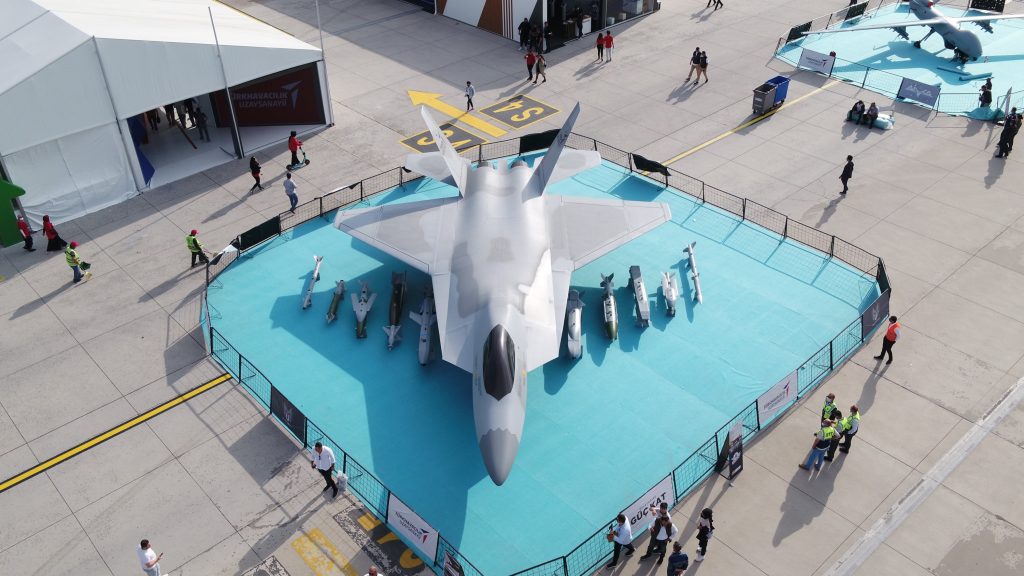In the field of 5th generation fighters, the TF-X project is the hope of this country.
Turkey is on its way to becoming a powerful defense industry. Their field-proven weapons are being noticed by international customers. In the field of 5th generation fighters, the TF-X project is the hope of this country, after failing to reach an agreement with the US on the 5th generation F-35 fighter. At Pakistan’s IDEAS expo 2022, a scale model of TF-X was displayed. Turkey, along with China, is said to have the most prominent presence at the expo.

In another development, stunning images of the Turkish TF-X fifth-generation fighter prototype in the assembly line have been circulating on social media. In a video released on November 23, Turkey’s next-generation fighter prototype TF-X is on the assembly line, proving that the program is still on track. We can see most of the fuselage and wings are already assembled, waiting for the next stages.
The fighter does not appear to have a horizontal stabilizer. It will be fitted with twin engines, outward-canted tail fins, modern avionics, and an ejection seat. The TF-X prototype is expected to be completed in 2023, with the first flight expected in 2025. Turkish President Recep Tayyip Erdogan also confirmed this timeline in January 2022.
The TF-X, developed by Turkish Aerospace Industries, is planned to replace the Turkish Air Force’s fleet of F-16 Fighting Falcons, and for export. The failure of the US F-35 deal further pushed Turkey to become more determined in the domestic TF-X project. In 2018, Turkey picked the F110-GE-129 or F110-GE-132 after-burning turbofan from General Electric to propel the fighter. However, the deterioration in US-Turkish ties made it appear a distant possibility.

To replace the GE engine, several options were considered, including Rolls-Royce. In its proposal, the business offered to build an engine production facility in Turkey that would also produce engines for helicopters, tanks, and missiles in addition to those for the TF-X. Russian engines were also considered. However, the Ukraine conflict leading to sanctions against Moscow makes this possibility quite remote.
It is planned that by the end of 2022, system functionality review and system requirements review will be completed. Thus, the preliminary design activities will come to an end. The program is expected to go to the next stage by 2023 when the initial roll-out occurs with engines capable of taxiing.





